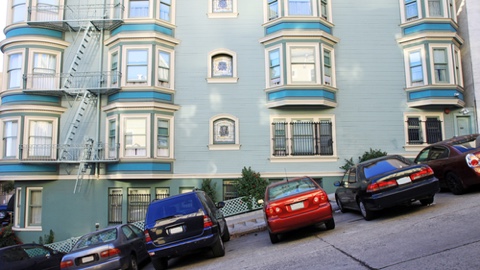
UCLA research professor of urban planning Donald Shoup’s new book, “Parking and the City,” has three recommendations for how cities plan parking. Shoup recommends cities remove requirements for off-street parking; charge the right prices for on-street parking; and spend parking revenue to improve public services on metered streets. He states that these changes would reverse trends from the early years of cars: separated land uses, low density and ample free parking to create drive-able cities while undermining walk-able neighborhoods.
Seattle recently removed requirements for some residential buildings to have off-street parking amid a wider reform of its parking rules. “We know that an over supply of cheap parking has a negative impact on Seattle — it increases driving and traffic congestion, increases our carbon footprint, and makes housing more expensive,” council member Rob Johnson said in a statement.
San Francisco, in an attempt to increase parking turnover and reduce congestion, has demand-based pricing at 7,000 metered spaces and 14 city-managed parking garages. Surge or congestion pricing is a common tactic for cities to implement in order to control traffic flow and force alternate behavior from drivers. Shoup argues that reforming pricing for on-street parking, can keep a few spaces open while allowing convenient access, easing congestion, conserving fuel and reducing pollution from cars idling and cruising for parking.
Demand-based parking can be made more acceptable if the residents see the revenue supporting public services on those streets. “If everybody sees their meter money at work, the new public services can make demand-based prices for on-street parking politically popular,” Shoup wrote.
“The way cities approach parking has massive consequences for how we travel, how our cities look, and how and where we build housing,” said Michael Manville, assistant professor of urban planning at UCLA Luskin.


